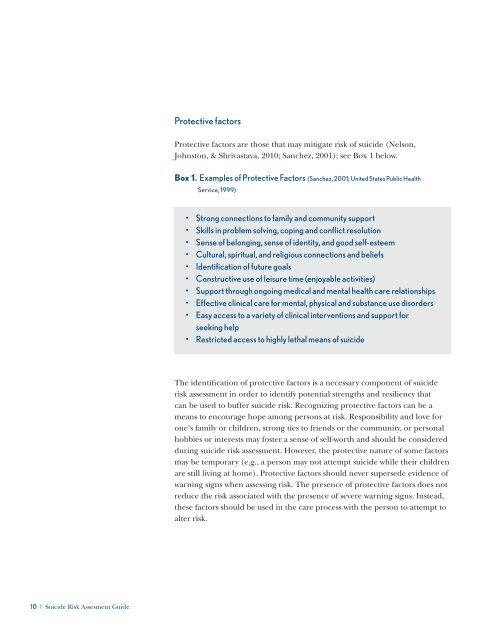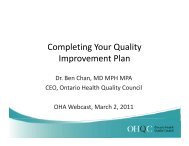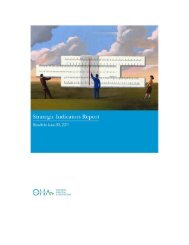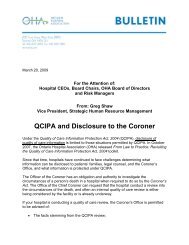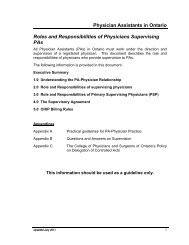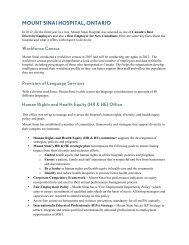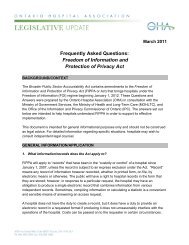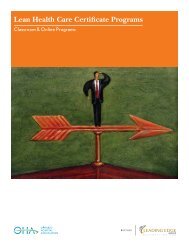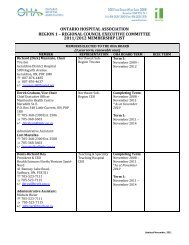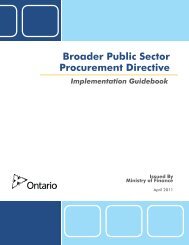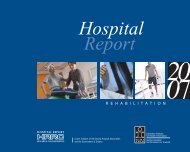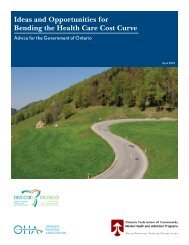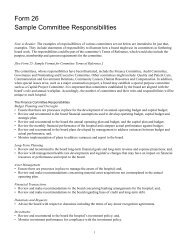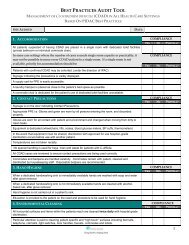Suicide Risk Assessment Guide - Ontario Hospital Association
Suicide Risk Assessment Guide - Ontario Hospital Association
Suicide Risk Assessment Guide - Ontario Hospital Association
You also want an ePaper? Increase the reach of your titles
YUMPU automatically turns print PDFs into web optimized ePapers that Google loves.
10 I <strong>Suicide</strong> <strong>Risk</strong> Assesment <strong>Guide</strong><br />
Protective factors<br />
Protective factors are those that may mitigate risk of suicide (Nelson,<br />
Johnston, & Shrivastava, 2010; Sanchez, 2001); see Box 1 below.<br />
Box 1. Examples of Protective Factors (Sanchez, 2001; United States Public Health<br />
Service, 1999)<br />
• Strong connections to family and community support<br />
• Skills in problem solving, coping and conflict resolution<br />
• Sense of belonging, sense of identity, and good self-esteem<br />
• Cultural, spiritual, and religious connections and beliefs<br />
• Identification of future goals<br />
• Constructive use of leisure time (enjoyable activities)<br />
• Support through ongoing medical and mental health care relationships<br />
• Effective clinical care for mental, physical and substance use disorders<br />
• Easy access to a variety of clinical interventions and support for<br />
seeking help<br />
• Restricted access to highly lethal means of suicide<br />
The identification of protective factors is a necessary component of suicide<br />
risk assessment in order to identify potential strengths and resiliency that<br />
can be used to buffer suicide risk. Recognizing protective factors can be a<br />
means to encourage hope among persons at risk. Responsibility and love for<br />
one’s family or children, strong ties to friends or the community, or personal<br />
hobbies or interests may foster a sense of self-worth and should be considered<br />
during suicide risk assessment. However, the protective nature of some factors<br />
may be temporary (e.g., a person may not attempt suicide while their children<br />
are still living at home). Protective factors should never supersede evidence of<br />
warning signs when assessing risk. The presence of protective factors does not<br />
reduce the risk associated with the presence of severe warning signs. Instead,<br />
these factors should be used in the care process with the person to attempt to<br />
alter risk.


